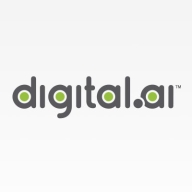

Red Hat Ansible Automation Platform and Digital.ai Agility are competing in enterprise operations. Red Hat Ansible Automation Platform leads in deployment efficiency and pricing, while Digital.ai Agility excels in advanced features for strategic planning.
Features: Red Hat Ansible Automation Platform efficiently automates IT tasks and includes a wide module library. Digital.ai Agility is strong in project management, dashboard customization, and strategic analytics.
Room for Improvement: Red Hat Ansible Automation Platform could enhance its project management features further. Improved analytics and strategic planning tools could benefit the platform. Digital.ai Agility may improve its ease of integration for faster adaptation and could benefit from streamlining its initial configuration process.
Ease of Deployment and Customer Service: Red Hat Ansible Automation Platform offers an easy setup model with extensive support. Digital.ai Agility may require more initial setup but compensates with its sophisticated project management tools suitable for complex needs.
Pricing and ROI: Red Hat Ansible Automation Platform provides competitive pricing, offering potential for quicker ROI due to efficient deployment. Digital.ai Agility may require a higher upfront investment but offers substantial ROI through its comprehensive feature set, improving strategic efficiency and productivity.
| Product | Market Share (%) |
|---|---|
| Red Hat Ansible Automation Platform | 4.6% |
| Digital.ai Agility | 1.7% |
| Other | 93.7% |


| Company Size | Count |
|---|---|
| Small Business | 24 |
| Midsize Enterprise | 8 |
| Large Enterprise | 48 |
Enterprise business agility rests on agile planning that scales and has the flexibility needed to meet the needs of customers and the market. Digital.ai Agility enables organizations to scale up agile from the team level across the product portfolio, improve collaboration and efficiency, and deliver software that provides more value.
Red Hat Ansible Automation Platform streamlines IT operations with features like a simplified GUI and extensive module support. Its agentless architecture and YAML ease make it an adaptable choice for managing diverse infrastructures efficiently.
Red Hat Ansible Automation Platform offers a robust automation framework that supports multiple environments and integrates well with various applications. Its agentless Python-based architecture facilitates efficient server management and rapid update deployment. Users benefit from centralized management through Ansible Tower, role-based access control, and dynamic inventory. However, improvement areas include documentation, API integration, network support, and UI scaling. Enhanced community contributions could address module availability and compatibility gaps.
What are the most important features of Red Hat Ansible Automation Platform?In industries like finance, healthcare, and technology, Red Hat Ansible Automation Platform is used for network management, security compliance, and configuration tasks. Organizations utilize its capabilities for cloud and on-premises deployment, infrastructure provisioning, and workflow orchestration. Many integrate it with tools such as Puppet or Terraform to enhance CI/CD processes, benefiting from its agentless design in adapting to cloud environments.
We monitor all Release Automation reviews to prevent fraudulent reviews and keep review quality high. We do not post reviews by company employees or direct competitors. We validate each review for authenticity via cross-reference with LinkedIn, and personal follow-up with the reviewer when necessary.